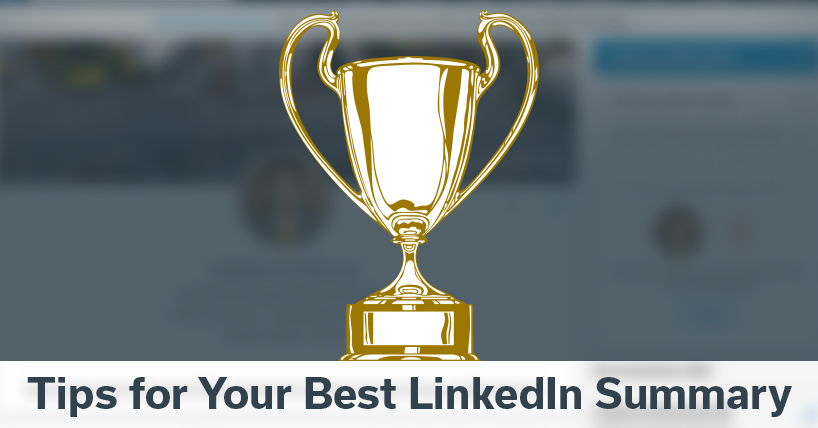Your LinkedIn summary is at the top of your profile, so it’s the section most people read to get a sense of who you are. Don’t leave it blank because you aren’t sure what to write. Here is a simple process that will help you create a strong, interesting summary.
Start with a goal
What is your purpose for using LinkedIn? Are you generating leads, building credibility, looking for referrals, hoping to find a new job?
Your goal will tell you which viewers matter most. Write your summary to those people.
For example, if you are a sales executive who uses LinkedIn for prospecting, your summary should not talk about what a great sales rep you are and how you always exceed quota. That will turn off prospects. Instead, your summary should focus on what kind of problems you can solve for customers.
Choose three key points
Once you know who you are writing to, it’s easy to identify the key points you want to make. Ask yourself what you want them to take away from reading your profile.
The simplest approach is to cover the following topics:
- Who do you help?
- How do you help them?
- How do you show what you do works?
Mention results, especially ones you can quantify, and awards or accomplishments. Results demonstrate expertise, establish credibility, and build trust.
Now you’ve brainstormed, and next you write.
Here are eight tips to help you write a strong summary:
- Write in the first person. Use “I” or “we,” and write as if you are speaking directly to the reader.
- Start strong. Your first two lines are all that’s visible unless viewers click “See more,” so make them compelling. You might use a quotation, story, or something that will attract attention and make them want to read more.
- Apply keywords. Start by drafting your summary without thinking about keywords. Then, go back over what you have written, and see where you can insert keywords – but make sure it stays readable. You can also incorporate keywords at the end of your summary. Say “Specializing in” or “Experienced in,” and then list all your important phrases.
- Use jargon strategically. Buzzwords show that you have deep expertise in your industry. But don’t overuse them – people are more likely to understand what you do if you explain it in simple business terms.
- Use text formatting to improve readability. Although you can’t use bold or change the font size, you can use ALL CAPS for headers, bullets for lists, and lines to separate sections. But use these judiciously – you don’t want the summary to look “spammy.”
- Upload resources. Provide introductory materials, such as videos, PowerPoint presentations, case studies, and brochures so the next step is easy for people who want to learn more.
- Make it the right length.LinkedIn gives you 2,000 characters for the summary. However, unless you have a good story to tell or lots of keywords, your summary may be more readable if you keep it to about half that.
- End with a call to action.What do you want your readers to do? They may not be ready to contact you, so consider smaller steps that require less commitment. Examples: watching an informational video, signing up for your newsletter, downloading an e-book.
Remember that your LinkedIn summary is a work in progress. Keep tweaking and improving it as you gain more experience and have new stories to tell.

